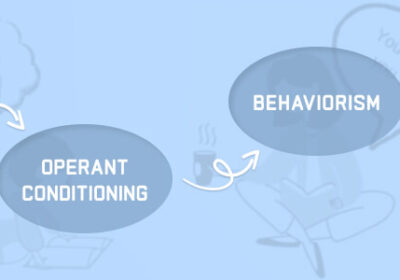The Role of Employee Resource Groups in Enhancing Workplace Diversity
Employee resource groups are voluntary entities. People in these groups have common characteristics, identities, and interests. Are you a member of any employee resource group? If not, learn how employee resource groups increase diversity in a company.
Now you know what is an employee resource group. But do you know the purpose of such a group? Employee resource group helps in the professional development of all group members.
All members of an ERG have a greater sense of unity. As a result, employee resource groups increase the inclusivity of the workforce.
Employee resource groups have existed in complex organizations for more than 40 years. In 1970, Xerox CEO Wilson created the first ERG. However, the importance of such groups increased in the last five years.
They are no longer networking groups. They help in increasing diversity and inclusion. However, modern ERGs play a strategic role in a company’s operations.
Types of Employee Resource Groups

You already know what is an employee resource group. Now, you need to learn about the different kinds of ERGs.
Demographic-based ERGs
These groups provide support, resources, and the chance to network with employees of specific demographic qualities.
For example, there are separate ERGs for women, veterans, and LGBTQ+ employees.
An ERG for women investigates the common challenges female employees face in a company. In 2023, only 8% of US companies have a female leader.
This is a challenge. So, an ERG group investigates the typical biases and issues for which female employees don’t get desired promotions in a company.
Specific interest-based ERGs
You can have employee resource groups of people with the same hobby or background.
For example, Asian employees in your organization might feel that native English speakers discriminate against them. The employee resource group for Asian employees in your office will investigate the matter.
Advantages of ERGs
The natural advantages of employee resource groups are:
- Increase in bonding among employees
- Increase in productivity of individual employees
- Employees stay in the same company for a long time
- A satisfied workforce has employees who motivate each other
Benefits To Employees

Employees enjoy better connections and networking when they are a part of employee resource groups. They can easily connect with leaders and communicate the challenges faced.
A company with employee resource groups is culturally sensitive. Moreover, a ResearchGate survey finds that ERGs increased the productivity of 35% of employees.
Benefits To The Organization

Experts say that networking and communication boost the leadership potential of employees in general. The quality of Human resource management is also better in a company with ERGs.
Companies with ERGs also reflect better nurturing of new talents. As a result, employees are highly engaged and committed. Naturally, their group performance is better.
Benefits Of Employee Resource Groups

Experts say an ERG is a win-win situation for a company and its employees. ERGs not only make the workplace compatible and fair.
It also helps employees to grow and establish themselves within the organization.
Strengthening Workplace Relationships
Employees within an ERG can communicate with peers easily. ERGs have a robust methodology to address grievances or problems facing employees in the group.
Naturally, it leads to quicker conflict resolution. It also strengthens the relationship between employees of various demographics.
Fostering A Sense Of Belonging

ERGs are a psychologically compatible place to discuss the odds you face after joining a company. Your ERG will stand in solidarity if you face any discrimination.
As a result, employees find a sense of identity. Most importantly, their confidence grows if they are a part of employee resource groups.
Promoting Personal And Professional Growth
CNBC states that 80% of American employees want to work in diverse, inclusive companies. Most companies with ERGs are varied and inclusive. Such companies can retain employees for a long time.
As a result, their employees can grow with the company.
However, ERG teams also help with professional growth. As the ERG network grows, it includes leaders, managers, seniors, and juniors alike. Hence, employees share new perspectives and insights to improve their work and grow the business.
Nurturing The Company Community
A company can have multiple ERGs. For example, one employee resource group might help women employees. Whereas the other might help cultural and religious minorities in the office.
As a result, employees from all communities go through measurable progress.
How to Start an ERG

Any company can open an ERG through some basic steps. The group then grows as more employees join it.
Aligning ERG initiatives with organizational goals
This is the first step of opening an ERG. Firstly, survey why you need an ERG. For example, if two non-white employees reported racial discrimination last month, it’s a big red flag.
It’s time for you to open an employee resource group for all non-white employees. It will help the leadership to know the areas of improvement, too.
Getting executive support
The next step is to gather executive support for your ERG. Senior executive leaders can help connect the ERG with the company-C suite.
Putting together an ERG team
There can be 2-3 executives from the hierarchy in an ERG. I prefer that ERGs be small and region-specific. Thus, they can focus on local and minor issues.
Defining ERG leadership support roles
The ERG leadership needs to form a structure of reporting in the team. They set the objectives and KPIs for the team, too.
Deploying the Employee Resource Group program
This program is essential for informing management about the issues they should focus on.
The program also includes regular meetings and discussions to identify all group employees facing issues.
Challenges of Running Effective ERGs

Many employees think that joining an ERG is equivalent to lobbying. They also believe that joining such groups can hamper their reputation on the floor.
So, HR managers should promote the necessity of joining ERGs.
Ensuring inclusivity
A Gallup study finds that 25% of black and “people of color” employees are discriminated against in the US workplace. So, the first step after forming ERGs is detecting the DEI issues that exist in the company.
Then, you can mitigate those problems.
Maintaining transparency
ERGs have at least 2-3 executives and managers. Therefore, they will quickly know if the leaders implement any discriminatory policy.
Therefore, the formation of an ERG can help in maintaining transparency.
Addressing diverse needs
The ERG members can comprise diverse panels and represent recruitment drives. Hence, they can quickly understand the diverse needs of the employees.
Many companies have unique workplace diversity goals. Companies like Unilever have strong gender and cultural diversity policies.
Multiple ERG groups can help to address these diverse needs.
Advocating for underrepresented team members

In the USA, 91% of the employees faced workplace discrimination in 2023. At the same time, most companies have ERGs.
Hence, ERGS must have a fixed methodology of working. Experts say that most ERGs do not care for under-represented team members’ needs.
Thus, your management must empower and encourage the ERG to function freely.
Fostering inclusivity
The presence of ERGs gives a message that the company is culturally aware and sensitive. As a result, diverse employees will feel comfortable working here.
Encouraging allyship
The ERG leaders must encourage allyship.
They must spot the most vulnerable members of ERGs. Then, they must groom and train them. As an outcome, a culture of allyship is created.
Providing support and resources
Experts say that ERGs must get access to supporting mechanisms and resources. For example, there should be a formal channel for ERGs to report any issue.
ERGs must also have access to meeting rooms, boards, and other stationery to host their meetings successfully.
Promoting fair practice
ERGs can suggest policy rectifications to human resource management. For example, if women cannot access proper sanitary hygienics in the office, ERGs should suggest a policy.
Strategies to Support Employee Resource Groups

There are many ways to support ERGs. Various stakeholders can adopt diverse strategies to support them.
Empowering ERG members
All companies must have clear policies to promote ERG teams. Annual reports and monthly or quarterly releases must evaluate the role of ERG teams.
As a result, the ERG members will feel empowered.
Encouraging collaboration
Companies like Microsoft, JP Morgan, and others in the USA have multiple active ERG teams. Some of these teams are BAM (Blacks in Microsoft), WFN (Working family’s network), and many more.
These employee resource groups publish newsletters, report progress, and accept/shuffle members to create a culture of collaboration.
Implementing feedback mechanisms
ERGs must not reflect individual supremacy. Instead, decisions should be based on consensus.
So, ERG leaders must take random feedback from group members. Members can comment if they are happy with the work done by the ERG. They can also suggest improvements in the working process.
Recognizing achievements
Most companies have a policy of annual meetings of ERGs in place. These meetings are essential to acknowledge the changes introduced through ERGs.
FAQs on Employee Resource Groups
- How do I know the role of ERGs in my company?
- Can there be multiple ERGs in a company?
- ERG meaning: Is it the same as a Business Resource Group (BRG?)
Statistics on companies with ERGs
About 90% of the F500 companies have multiple ERGs. However, a survey also finds that 18% of the mid-sized companies in the USA have ERGs.
Meeting locations for ERGs
ERGs should meet and frame annual plans. These plans must be submitted for review to the ODET.
Disadvantages of ERGs
ERGs are an effective means of improving DEI. However, there are some disadvantages of ERGs:
- Lack of proper administrative support
- Lack of organized day-to-day operations
Differentiating ERGs and BRGs
Business resource groups are considered the same as ERPs. However, the BRGs are social groups. Mostly, they need validation from higher management.
Building networks within ERGs
Diversification of ERG networks depends on better realization of needs. For instance, an ERG for helping female employees can be opened first. However, the next step should be separating working mothers with different needs in another ERG.
Creating affinity groups
The primary step of forming affinity groups is sharing ideas. For evidence, you decide that your company needs a second ERG for women.
Firstly, you promote your idea. Secondly, you see if others identify as potential candidates for the group.
Establishing connections for mutual support
The primary step in the creation of affinity groups is gathering mutual support. You can seek mutual support by sending a formal mail, citing the need for an ERG.
Integrating ERGs with mentoring programs
Many companies have employee mentorship programs, which were launched after the proposal of ERGs.
ERGs can also provide direct mentorship or courses to employees. Experts say that such mentorships can be:
- Traditional classroom-based
- Peer to peer
- Group session based
Enhancing professional development
Employee resource groups can provide language training to non-native English speakers to deal with front desk representatives. Similar programs exist under the patronage of ERGs in offices.
Providing mentorship opportunities for ERG members
There are many mentorship programs for ERG members. However, a standard method is identifying and pairing members from the group with seniors.
These mentorship opportunities create a better and more diverse talent pipeline in the company.
Conclusion
ERGs play a crucial role in nurturing diverse talents. They also help to modify or implement new DEI rules in a company. Most US-based companies have multiple ERGs that serve various purposes.
ERGs organize seminars, meetings, and evaluation sessions to improve their contributions. However, research shows that promoting and educating employees about an ERG is necessary.
Companies like Microsoft have separate employee resource groups for employees from different origins and cultural backgrounds.
Moreover, employee resource groups can balance gender equity in companies, too. ERGs work on reducing the gender pay gap and promoting women to leadership positions, too.



